DRONE FLIES
We discuss drone flies under their own section, but they fall within the same range of insects as the hover flies. See HOVERFLIES
Its name refers to its similarity to a bee. This is considered mimicry which enables it to avoid being eaten by predators such as birds. The mechanical drone has been named after the bee too, but the ability of hoverflies, of which this is a member, have that amazing ability to hover in one place if they choose.
But that is getting the origins of the name in the wrong order. Hover flies are described separately index.asp?pageid=732655. Drone flies are named after the bees that they so closely resemble. (A drone is a female honey bee).
One often finds reference to the way some insects mimic others and get the benefit of the other - taste, toxicity, bite etc. Such mimicry is not intentional or part of some grand plan, but avoiding predators through this has certainly been to their benefit as they have evolved.
COMMON DRONE FLY : Eristalis tenax
The similarity with the European drone fly, ,which is described below is significant as they can be confused. But then many sources show the features such as colouration slightly differently. The main difference is the clarity of the rings on the thorax - this one having little that is obvious; the European one having very conspicuous white rings.
Wiki tells us : Eristalis tenax, the common drone fly, is a common, migratory, cosmopolitan species of hover fly. It is the most widely distributed syrphid species in the world, and is known from all regions except the Antarctic. It has been introduced into North America and is widely established. It can be found in gardens and fields in Europe[3] and Australia. It has also been found in the Himalayas.
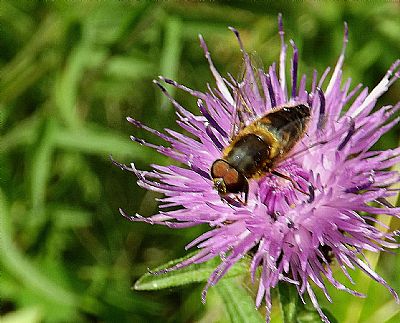
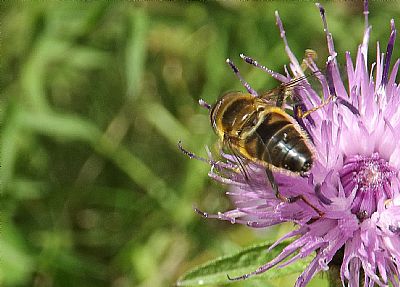
EUROPEAN DRONE FLY : Eristalis arbustorum
Inaturalist tells us that the European drone fly, is an abundant Northern Hemisphere species of syrphid fly, originally first officially described by Linnaeus in 1758 as Musca arbustorum. This website shows the closest match to ouor example, but is we look at other photos of this species Eristalis arbustorum, we notice slight variations in its colouration so those serious in this subject should ensure exact identification.
It goes on to say that Eristalis arbustorum is found in a wide range of wetlands and in alluvial softwood forest, temperate coniferous forests, boreal forests, taiga, and montane tundra, as well as farmland, urban parks and gardens. It visits the flowers of a wide range of low-growing plants and shrubs.[8] The larva is aquatic, occurring in shallow, nutrient rich standing water and in cow-dung, silage pits and compost heaps. The species is known to be migratory in Europe. Our example though was photographed on a John's Wort flower in Cardross in July.
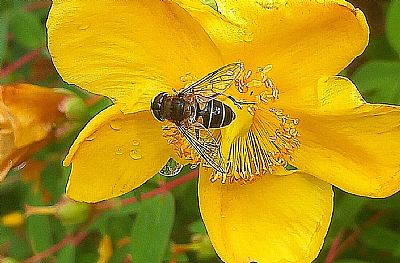
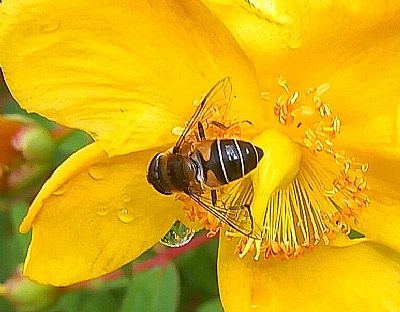
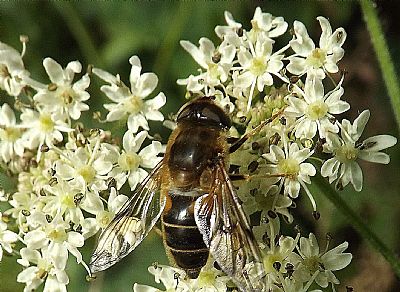
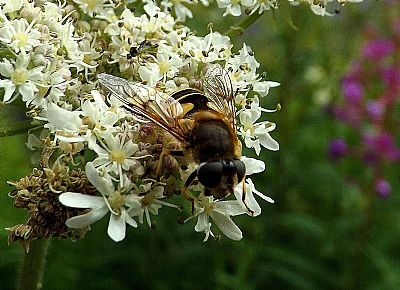
INATURALIST : https://www.inaturalist.org/taxa/320786-Eristalis-arbustorum
WILDLIFETRUSTS : https://www.wildlifetrusts.org/wildlife-explorer/invertebrates/flies/drone-fly

